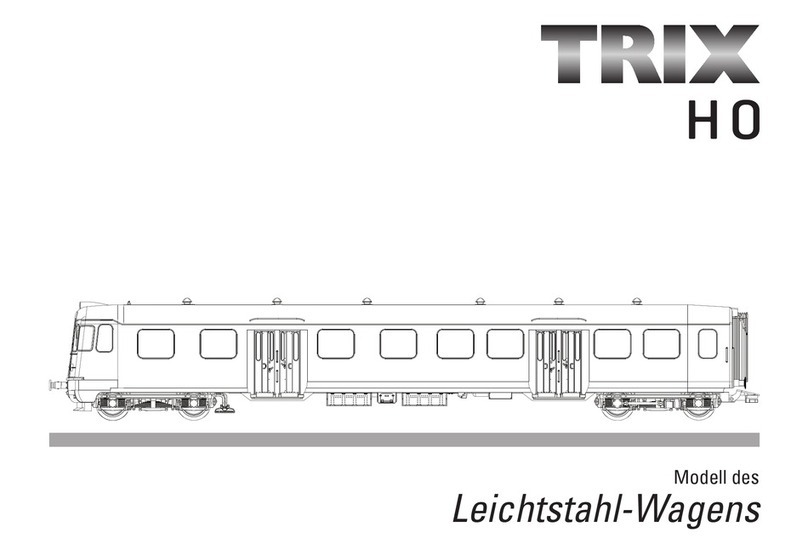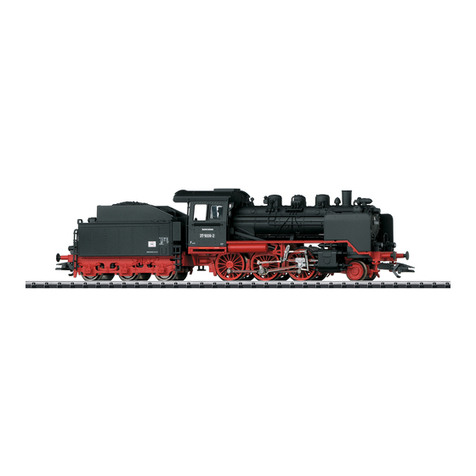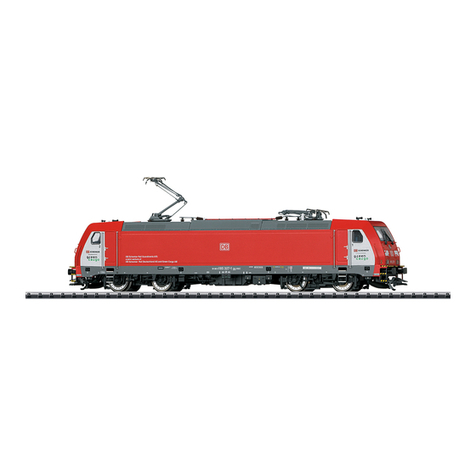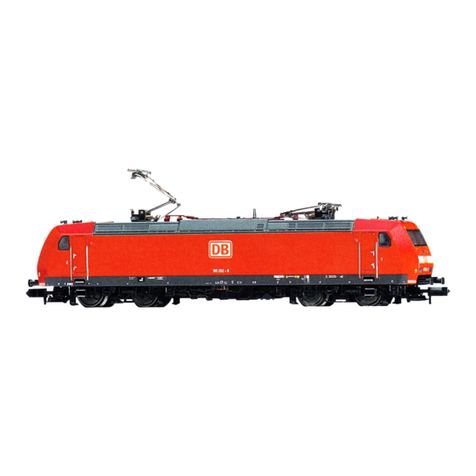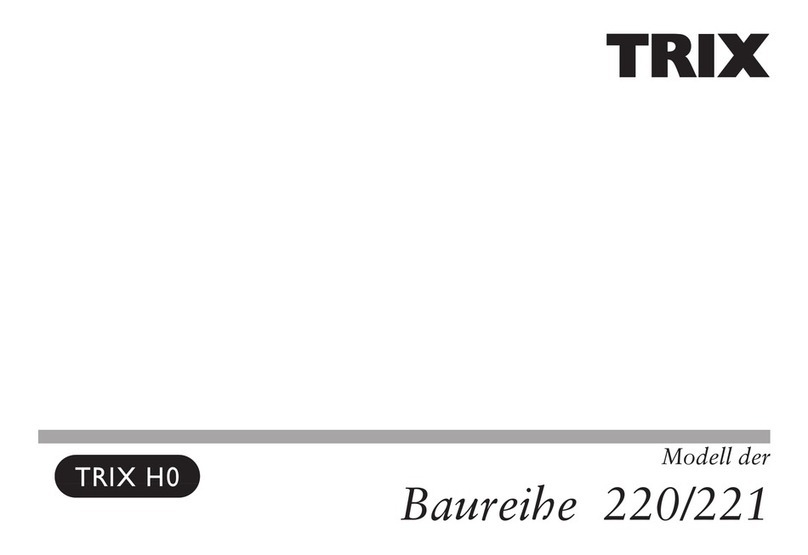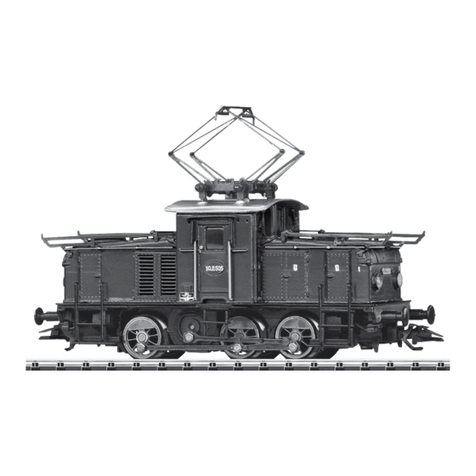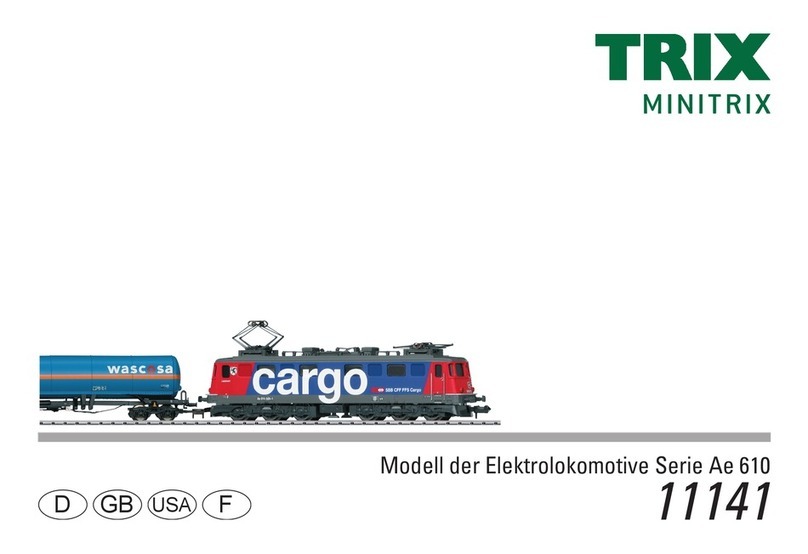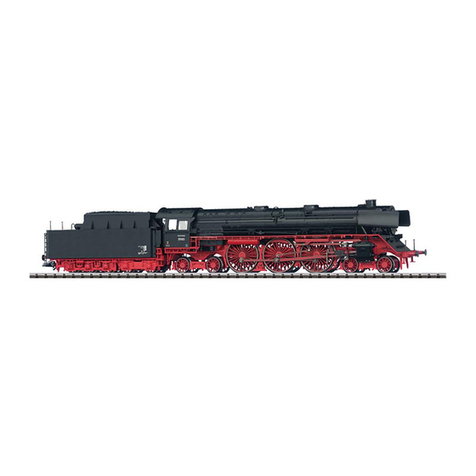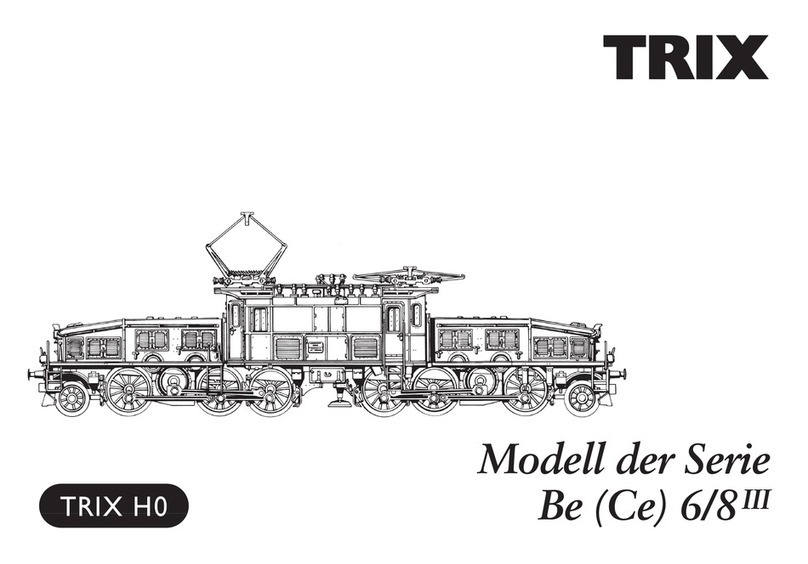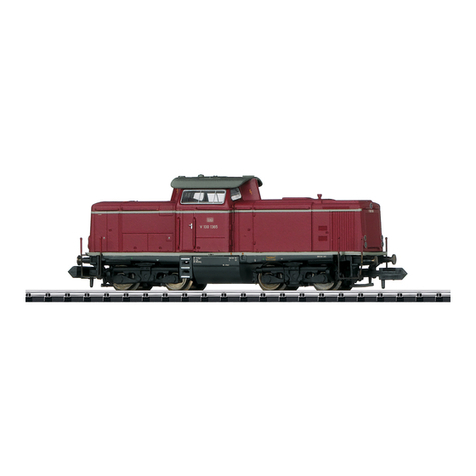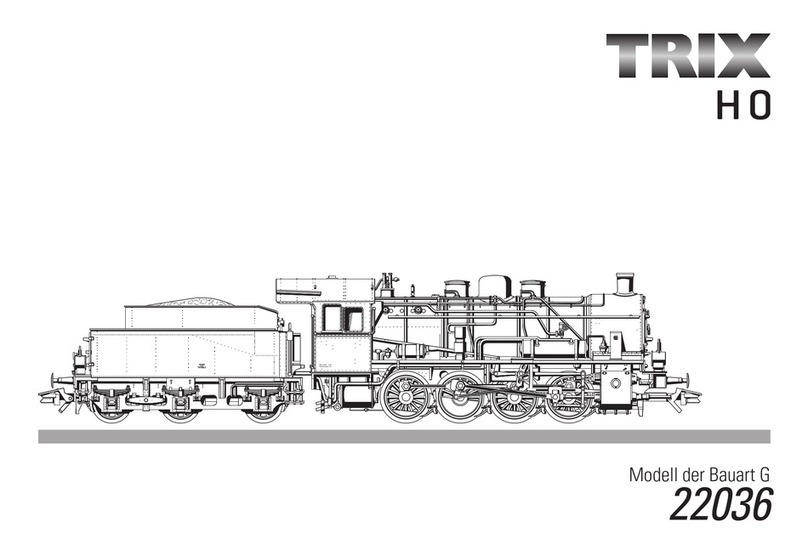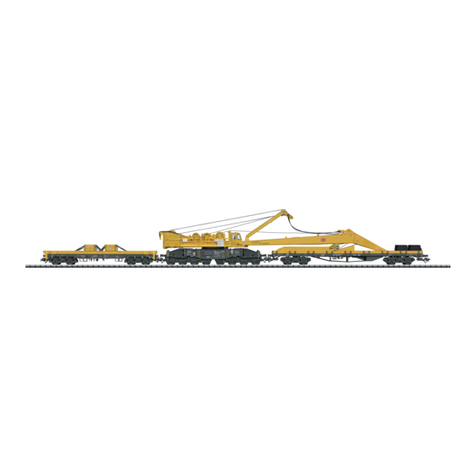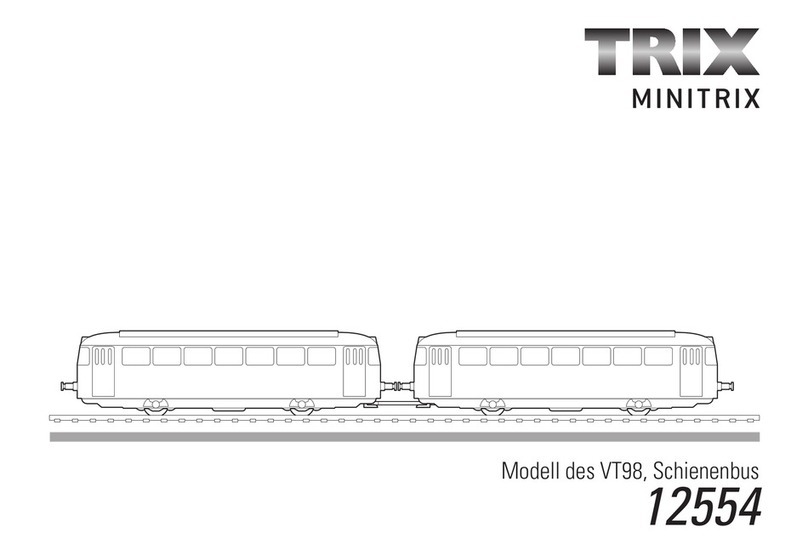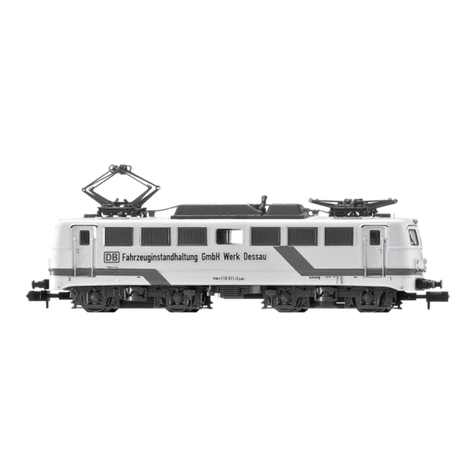
5
Informations concernant la locomotive réelle :
Après une interruption due à la grande crise économique,
l’électrification des lignes de la Reichsbahn a repris à partir
de 1930. Afin de desservir les nouvelles lignes électrifiées,
la DRG avait besoin de nouvelles et puissantes machines
électriques. Or, l’industrie ferroviare allemande avait entre-
temps dévelopé des concepts et des prototypes pour de
nouvelles locomotives universelles modernes.
La réalisation de Siemens montre le progrès indéniable fait
dans ce domaine quand on la compare aux locomotives fa-
briquées auparavant par les chemins de fer régionaux. Cette
locomotive légère universelle comportait un châssis soudé,
des bogies avec traverses porte-tampons intégrées et des
moteurs suspendus par le nez attaquant directment les
essieux. Les modernes moteurs transmettaient directement
aux essieux leur 2200 kW de puissance sans mécanisme
de transmission complexe. Sur lignes plates, la locomotive
atteignait la vitesse de pointe de 90 km/h.
La première machine a été testée avec succès et reprise en
écritures à la Reichsbahn en 1930 sous le matricule E 44 001.
Une série d‘autres locomotives capables de rouler à 80 km/h
ont été immédiatement commandées pour desservir dans
un premier temps la ligne Stuttgart – Augsburg (sur laquelle
se trouvait la fameuse Geislinger Steige). La Reichsbahn
a en tout passé commande de 174 locomotives dont 45
exemplaires sont restès aprés 1945 en Allemagne de l’Est et
le reste en République Fédérale.
Informatie van het voorbeeld:
Na een onderbreking door de grote economische crisis
werd vanaf 1930 de elektrificatie van het Reichsbahn-net
weer ter hand genomen. Voor de nieuwe trajecten waren
nieuwe krachtige locomotieven nodig. In de tussentijd had
de Duitse spoorwegindustrie concepten en prototypen voor
moderne universele locomotieven ontwikkeld.
De constructie van Siemens toont duidelijke vorderingen
ten opzichte van de eerdere doorontwikkelde Länderbahn-
constructies. De als licht universele locomotief geconci-
pieerde machine was op een gelast chasis gebouwd, op
draaistellen met geïntegreerde bufferbalken gelagerd en
met taatslagermotoren op de aangedreven. De moderne
motoren leverden 2200 kW die zonder omstandige mecha-
niek direkt op de assen ter beschikking stonden. Op vlakke
trajecten werd 90 km/h bereikt.
De eerste machine werd met succes getest en nog in
1930 door de Reichsbahn als E 44 001 overgenomen. Meer
locomotieven in een serie uitvoering met 80 km/h maximum-
snelheid werden per omgaande besteld, als eerste voor het
traject Stuttgart – Augsburg (met de Geislinger Steige). De
Reichsbahn had in totaal 174 serie locomotieven aange-
schaft waarvan er 45 in Oost-Duitsland gebleven zijn. De
meeste verbleven in het westen.




